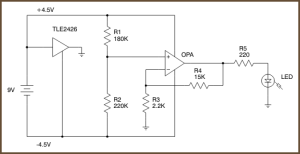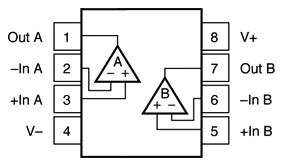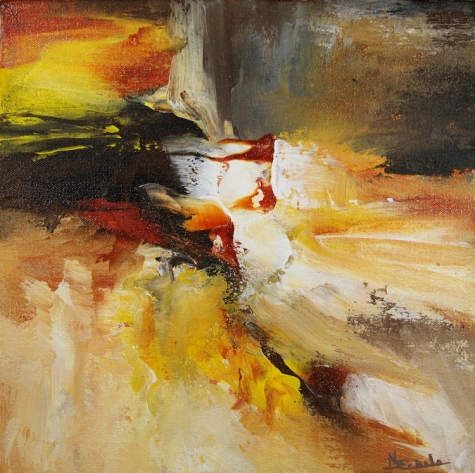 Throughout history, art has often been seen as a realm of pure emotion, the unfathomable territory of a “dark mystery” (Rand 1975, 15) — a human product whose nature and function are impervious to reason and objective definition. Yet recent times have witnessed phenomena that give heightened urgency to the question of the nature of art. For ours is a period riven by total abstraction in painting and sculpture, serialism in music, the abandonment of meter in poetry, and similar movements in the other arts — as well as Socialist Realism and propagandistic art in general, strong undercurrents of nihilism and irrationalism [1], the opposition between the “two cultures” of science and art, the rise of technological competitors to the traditional arts (portraiture, for example, largely having been supplanted by photography), the centering of artistic activity in the universities, government subsidies for and influence over the arts, and the increasingly theory-laden perception of aestheticians, art historians, and critics. All this has left art that strives for “joy and reason and meaning” (Rand 1943, 543) without a voice and, famously, without a theory (Wolfe 1975).
Throughout history, art has often been seen as a realm of pure emotion, the unfathomable territory of a “dark mystery” (Rand 1975, 15) — a human product whose nature and function are impervious to reason and objective definition. Yet recent times have witnessed phenomena that give heightened urgency to the question of the nature of art. For ours is a period riven by total abstraction in painting and sculpture, serialism in music, the abandonment of meter in poetry, and similar movements in the other arts — as well as Socialist Realism and propagandistic art in general, strong undercurrents of nihilism and irrationalism [1], the opposition between the “two cultures” of science and art, the rise of technological competitors to the traditional arts (portraiture, for example, largely having been supplanted by photography), the centering of artistic activity in the universities, government subsidies for and influence over the arts, and the increasingly theory-laden perception of aestheticians, art historians, and critics. All this has left art that strives for “joy and reason and meaning” (Rand 1943, 543) without a voice and, famously, without a theory (Wolfe 1975).
In the midst of this chaos, one of the great artistic outcasts of the twentieth century reflected on the nature and power of art: the novelist and philosopher Ayn Rand. This essay distills what I see as the essence of Rand’s contribution to aesthetics. [2]
Art as a Conceptual Endeavor
The hallmark of human life is its conceptual nature. What Jacob Bronowski called “human specificity” (Bronowski 1978, 62) lies in the fact that human beings are able to abstract from their immediate perceptions to grasp the nature of things in ways that range widely and deeply in space, time, and cognitive scale. What makes this possible is the fact that human beings are conceptual. Following and extending Rand’s insights in Introduction to Objectivist Epistemology and The Romantic Manifesto, I hold that there are four main fields of conceptual endeavor among human beings:
Language
Mathematics
Art
Technology
Each of these fields has deep roots in human history. There are also important similarities, differences, and connections between them (e.g., language and mathematics are generally seen as directed toward the pursuit of knowledge, whereas art and technology are directed toward creation). Yet all four are distinctive to human beings and grounded in the human ability to abstract, conceptualize, and project their insights and imagination forward and backward in time and space.
Traditionally, there have been two opposing theories of art: the mimetic theory and the expression theory. While Rand saw value in each of these approaches, she did not accept these theories as the only alternatives. In aesthetics, as in so many other areas of philosophy (Sciabarra 1995), Rand sought to overcome the traditional dichotomies. So let us investigate the texts to see how Rand went about finding a third way in aesthetics.
There are many questions one can ask about art, each of which leads in a different direction. Philosophers have traditionally asked: What is art? More recently, biologists and ethologists have asked a question to which we shall return later: What is art for? [3] Ayn Rand seems to approach the topic by asking: What does art do? We are all familiar with the fact that art can do many things: it can inspire, enlighten, send shivers up the spine, delight, anger, frighten; it can make one think, feel, shake one’s head in astonishment, cry, laugh out loud; it can evoke feelings of triumph, melancholy, light-heartedness, serenity, excitement, boredom, rightness, anxiety, joy, sorrow. Yet according to Rand the fundamental thing that art does is this:
Art brings man’s concepts to the perceptual level of his consciousness and allows him to grasp them directly, as if they were percepts. (Rand 1975, 20)
How does a work of art accomplish this feat? The language that Rand uses to describe the process is fundamentally the same as the language she uses to describe the process of concept-formation. Consider:
By a selective recreation, art isolates and integrates those aspects of reality which represent man’s fundamental view of himself and existence. Out of the countless numbers of concretes — of single, disorganized and (seemingly) contradictory attributes, actions, and entities — an artist isolates the things which he regards as metaphysically essential and integrates them into a single new concrete that represents an embodied abstraction. (Rand 1975, 19-20)
A concept is a mental integration of two or more units which are isolated according to a specific characteristic(s) and united by a specific definition…. The act of isolation involved is a process of abstraction: i.e., a selective mental focus that takes out or separates a certain aspect of reality from all others…. The uniting involved is not a mere sum, but an integration, i.e., a blending of the units into a single, new mental entity which is used thereafter as a single unit of thought. (Rand 1990, 10)
According to Rand, isolation and integration are the core processes involved in both concept formation and artistic creation. We can see the similarities more fully by paraphrasing several paragraphs from Introduction to Objectivist Epistemology, substituting a few key terms:
“The purpose of [art] is to expand the range of man’s consciousness, of his knowledge, beyond the perceptual level: beyond the direct power of his senses and the immediate concretes of any given moment…. The process of [creating art] is a process of integrating an unlimited scale of knowledge to man’s limited perceptual experience — a process of making the universe knowable by bringing it within the range of man’s consciousness, by establishing its relationship to man. It is not an accident that man’s earliest attempts at [art] (the evidence of which survives to this day) consisted of relating things to himself…” (Rand 1990, 9, substituting ‘art’ or ‘creating art’ for ‘measurement’)
“It is here that Protagoras’ old dictum may be given a new meaning, the opposite of the one he intended: “Man is the measure of all things.” Man is the measure, epistemologically — not metaphysically. In regard to human [art], man has to be the measure, since he has to bring all things into the realm of the humanly knowable. But, far from leading to subjectivism, the methods which he has to employ require the most rigorous [aesthetic] precision, the most rigorous compliance with objective rules and facts — if the end product is to be [art].” (Rand 1990, 8, substituting ‘art’ for ‘knowledge’ and ‘aesthetic’ for ‘mathematical’)
“In order to be used as a single unit, the enormous sum integrated by a concept has to be given the form of a single, specific, perceptual concrete, which will differentiate it from all other concretes and from all other concepts. This is the function performed by [art]. [Art] is a code of [aesthetic images] that serves the psycho-epistemological function of converting concepts into the [actual or mental] equivalent of concretes…. [Aesthetic images] transform concepts into [actual or mental] concretes.” (Rand 1990, 10, substituting ‘art’ for ‘language’, ‘aesthetic images’ for ‘visual/auditory symbols’ and ‘words’, and ‘actual or mental’ for ‘mental’)
The Epistemology of the Image
The foregoing is merely suggestive. We now delve deeper by defining our terms and exploring what I call the epistemology of the image.
By “art” I mean the sum of works created in the fields of drama, fiction, poetry, painting (including allied fields such as drawing and watercolor), sculpture, dance, song, and instrumental music. By “aesthetic” I mean of or relating to art. By “aesthetic image” I mean a visual, auditory, kinesthetic, or mental likeness contained in or evoked by a work of art.
The term “likeness” requires explication. Because human beings are primarily visual creatures, we tend to think of images as visual images. Yet I follow the ancient roots of the word in holding that an image is a likeness that is captured or communicated in the terms of any sense modality (or combination thereof), whether physically embodied in a created object or mentally embodied in human thoughts. The import of this usage will become clearer through examples and discussion.
As can be seen from my substitution of ‘art’ for ‘language’ in the preceding quotations, one way to approach the question of the nature of art is by way of an analogy to and contrast with language. Indeed, Rand asserts: “The claim that ‘art is a universal language’ is not an empty metaphor, it is literally true — in the sense of the psycho-epistemological function performed by art.” (Rand 1975, 20) The essence of her argument is threefold:
“Man retains his concepts by means of language.” (17)
“Language is a code of visual-auditory symbols that serves the psycho-epistemological function of converting abstractions into concretes or, more precisely, into the psycho-epistemological equivalent of concretes, into a manageable number of specific units.” (18)
“Just as language converts abstractions into the psycho-epistemological equivalent of concretes, into a manageable number of specific units — so art converts man’s metaphysical abstractions into the equivalent of concretes, into specific entities open to man’s direct perception.” (20)
Thus both words and art-works ‘stand for’ or are concrete symbols of human abstractions.
However, in line with the traditional distinction between philosophy and art, we can make an important distinction here between conventional symbols (such as words or mathematical symbols) and “organic” symbols (of which aesthetic images are an instance). Both words and images stand for or symbolize concepts, but they do so in different ways (on the distinction between words and images as indicative of the distinction between philosophy and art, see Rand 1975, 158-159). The fact that in English we use the letters “c-o-u-r-a-g-e” or the phonemes “kuhr-ij” to symbolize or stand for the concept of “moral strength in the face of fear” (or somesuch) is purely conventional; we could just as well use some other letters or phonemes, as languages other than English do. And this is true of all words (except perhaps onomatopoetic words). However, to symbolize the abstraction courage by means of an image or likeness of Socrates drinking the hemlock — as in J.L. David’s painting “The Death of Socrates” — is to do so in a direct or “organic” way, since Socrates’ drinking of the hemlock was itself an act of courage. David’s painting does not define the concept of courage in a discursive manner, but presents an instance of it; it says not “this is the definition of courage”, but “this is what courage is like”. Similarly, images in other art-forms and genres present what it is like to perform an action or live through an experience, what the world would be like if a certain course of events occurred, what it feels like to experience a certain emotion, and so on. [4]
Language consists in the representation of abstractions through discursive, purely conventional visual-auditory symbols that convert those abstractions into a manageable number of specific units, primarily for the purpose of understanding reality. Art consists in the representation of abstractions through presentational, “organic” images or likenesses; such images are developed by rearranging the sensory elements of our perceptual impressions of the world, they convert abstractions into specific entities that are open to human perception, and their primary purpose is to enable the experience of a heightened sense of the reality or importance of the presented abstractions. To put it another way: the image presented by a work of art represents or bears a likeness to something (e.g., Socrates’ action of drinking the hemlock) that is an instance of the abstraction — something that is, in Ayn Rand’s terminology, a unit of the concept. For Rand, art works are at root conceptual because they present abstractions in perceptual form. [5]
This is a radical view in aesthetics. In opposition to the mimetic theory of art, Rand holds that art is not a direct representation of particular entities in reality, but a concretization of abstractions about reality (or, more precisely, aspects thereof [6]). In opposition to the expression theory of art, Rand holds that art is not a direct expression of individual emotion, but a concretization of an individual’s concepts (albeit concepts that often are strongly charged with value-meaning). Thus Rand’s is an abstract approach to art: not in the sense that she thinks the best art is non-representational, but in the sense that art represents a human abstraction from reality. Rand recognizes that an art-work, like a word, is not an abstract universal (as a concept is); instead, it is a concrete particular that stands for or symbolizes an abstract universal. For Rand, an art-work is a delicate unity of abstract and concrete, of universal and particular — an organic unity, as opposed to the conventional unity of concept and word in language. This organicism, which emerges by means of a process of what we might call “abstraction through perceptual selection”, makes art more universal than language because we all perceive the same reality in roughly the same ways, whereas we do not all speak the same language.
The Nature of Aesthetic Abstraction
Rand provides two examples of the process of abstraction through perceptual selection. The first is a passage on visual abstraction, in which Rand uses as her example a still-life painting of apples (Rand 1971, 47-48):
The sensory-perceptual awareness of an adult does not consist of mere sense data (as it did in his infancy), but of integrations that combine sense data with a vast context of conceptual knowledge. The visual arts refine and direct the sensory elements of these integrations. By means of selectivity, of emphasis and omission, these arts lead man’s sight to the conceptual context intended by the artist. They teach man to see more precisely and to find deeper meaning in the field of his vision.
It is a common experience to observe that a particular painting — for example, a still life of apples — makes its subject “more real than it is in reality.” The apples seem brighter and firmer, they seem to possess an almost self-assertive character, a kind of heightened reality which neither their real-life models nor any color photograph can match. Yet if one examines them closely, one sees that no real-life apple ever looked like that. What is it, then, that the artist has done? The artist has created a visual abstraction.
He has performed the process of concept-formation — of isolating and integrating — but in exclusively visual terms. He has isolated the essential, distinguishing characteristics of apples and integrated them into a single unit. He has brought the conceptual method of functioning to the operations of a single sense organ, the organ of sight.
No one can perceive literally and indiscriminately every accidental, inconsequential detail of every apple he happens to see; everyone perceives and remembers only some aspects, which are not necessarily the essential ones; most people carry in mind a vaguely approximate image of an apple’s appearance. The painting concretizes that image by means of visual essentials, which most men have not focused on or identified, but recognize at once. What they feel, in effect, is: “Yes, that’s the way an apple looks to me!” In fact, no apple ever looked that way to them — only to the selectively focused eye of an artist. But, psycho-epistemologically, their sense of heightened reality is not an illusion: it comes from the greater clarity which the artist has given to their mental image. The painting has integrated the sum of their countless random impressions, and thus has brought order to the visual field of their experie
AMD
 A multi-institutional research team led by Andrei Kholkin of the University of Aveiro, Portugal, used a combination of experiments and modeling to identify and explain the presence of ferroelectricity, a property where materials switch their polarization when an electric field is applied, in the simplest known amino acid — glycine.
A multi-institutional research team led by Andrei Kholkin of the University of Aveiro, Portugal, used a combination of experiments and modeling to identify and explain the presence of ferroelectricity, a property where materials switch their polarization when an electric field is applied, in the simplest known amino acid — glycine.





